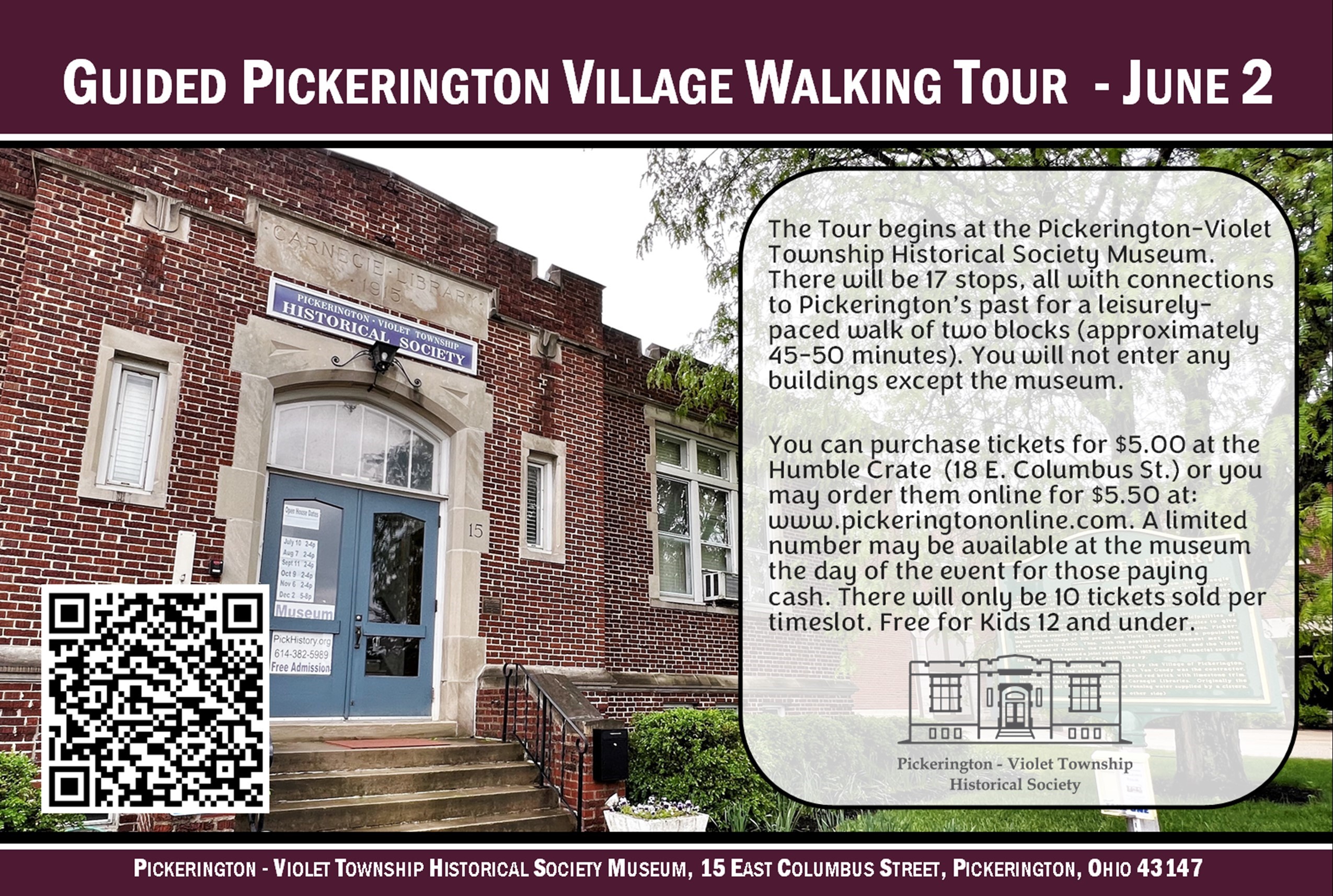
Simon “Dirty” Girty, “the White Savage” was branded a turncoat for befriending the Lenape People and joining the British.
March 10, 2022
From the Vagabond Historian
Vagabond’s Note: Within this story, GPS coordinates are provided for places where events took place. You can copy and paste those coordinates into the search box of Google Earth to virtually visit each location. When available, use the “Street View” option for a closer look.
Several years ago, I had the opportunity to spend time with a high ranking official from the Delaware Indian Nation. I asked him how I should refer to the Indian people. He said that using the term “Indian” was fine and that his people referred to themselves as “The Delaware Indian Nation.” He said the term “Native American” was also acceptable.
After Benedict Arnold, no individual associated with America’s struggle for independence has been more maligned than Simon Girty, aka “The White Savage,” “The Great Renegade,” and “Dirty Girty.” I will attempt to separate the real story of Girty’s life from folklore. I hope that you find it worthwhile.
The Girty brothers were born near Harrisburg, Pennsylvania.

GPS: 40°20’32.01″ N, 76°54’33.56″ W
Simon Girty Jr. was born in Harrisburg, PA in 1741. He was the second oldest of four brothers. Thomas was older and Simon’s younger brothers were James and George. Their mother, Mary, was English. Their father, Simon Girty Sr. was a Scotch-Irish pack horse driver and Indian trader.
In those days, the trails were too rough for wagons, so freight had to be hauled on the backs of pack animals. Pack-horse drivers were a hard-working, hard-drinking, hard-fighting breed of men. Girty Senior fit that life perfectly but the work meant leaving Mary and the boys for long stretches of time.
In addition to hauling freight, Girty Senior traded with Indians to augment his meager income. Sometimes, the negotiations devolved into drunken brawls in which fists were also traded.

During one such incident, Girty Senior finished second in a knife fight with a Lenape Indian known as “Fish”. The wounds were fatal. John Turner, Girty’s half-brother, tracked down Fish and killed him.
(Note – some accounts claim that Girty Senior was killed in a duel with a man named Samuel Sanders.)
Simon Girty and John Turner are captured by Seneca Chief Guyasuta at Fort Granville.
At the Girty homestead, Mary had trouble making ends meet and the family often went to bed hungry. They endured a couple of very lean years, before Mary wed John Turner. Turner, who was quite a bit older than Mary, provided for the family, but was meaner than a junkyard dog. He was an angry drunk who frequently beat Mary and the boys. The four brothers hated their stepfather.

GPS: 40° 35.296′ N, 77° 36.095′ W
It was during this time, that battles were raging nearby in what would later be known as the French and Indian War. Fearing for their safety, Turner moved the family closer to Fort Granville so that they could seek shelter in case of an attack.
On August 2, 1756, a combined French and Indian force overran Fort Granville and burned it to the ground. Fifteen-year-old Simon and his stepfather were taken captive by the Senecas. His mother and brothers were taken by the Shawnees and Delawares. The Senecas made Simon watch as they tortured old man Turner for killing Fish.
Chief Guyasuta of the Senecas adopted Simon and Simon lived with Guyasuta for the next eight years. He often traveled with Guyasuta and became close friends with many Indians. He interacted with multiple tribes and learned their languages and customs.
When the French and Indian War ended in 1763, Chief Guyasuta negotiated the peace agreement on behalf of the Iroquois Confederacy. The treaty provided that all white captives would be returned, so Simon was reunited with his mother and brothers at Fort Pitt (Pittsburgh) in 1764.
The British hired Simon Girty to serve as a liaison between Fort Pitt and the Native Americans.

GPS: 40.439256°N 80.021269°W
The British Indian Department at Fort Pitt offered him a job as an interpreter, negotiator, and liaison with the Indians. Simon served in that capacity for 11 years.
At this point it is worth noting that some historical accounts describe Girty as a loner who had few or no friends. That is far from the truth. Simon was extremely well liked by both whites and Indians. His best friend was Simon Kenton who became a prominent figure of the American Revolution.
By 1772, the British had decided to vacate Fort Pitt, however, Girty continued to remain in the area to serve the British Indian Department until 1775, when the Pennsylvania Militia under the command of General Wood commandeered Fort Pitt.
Wood offered Girty a lieutenant’s commission if he would serve as the militia’s liaison with the Indians. Girty wanted to be a captain, but he accepted the lieutenant rank on the general’s word that he would be promoted within two years.
General Edward Hand has Girty tried for treason at Fort Pitt.
In the spring of 1777, General Edward Hand took over command of Fort Pitt. Hand disliked Girty at once and became livid upon learning the lieutenant was spending time with his 15-year-old daughter. The girl had fallen in love with Simon and became determined to marry him. To disrupt the courtship, General Hand charged Girty with treason and had him arrested.
This is the point in the story where a major diversion is necessary. It may seem like a crazy non-sequitur now, but it will make sense to you later. (By the way, my friends will be impressed that I even know the term “non-sequitur!”)

You might recall that a Moravian Christian missionary named David Zeisberger established settlements of Christian Indians in Ohio at Salem, Shoenbrunn, and Gnaddenhutten and a British missionary named John Heckewelder later joined him as an assistant.
During the summer of 1777, Zeisberger learned that the British were recruiting a force of Indians for an attack on Fort Henry (current day Wheeling). Although the Christian Indians were committed to staying neutral in the war, Zeisberger sent a messenger to Fort Pitt to inform General Hand of the impending attack.
Hand responded by dispatching militia to Fort Henry to reinforce the garrison there. Hand also ordered Col. Andrew Swearingen at Holliday’s Fort (currently Weirton, WV) to take provisions to Fort Henry by canoe.
The attack took place on September 1, 1777, but the combined force of British and Indians could not take the fort. The British would later learn that their attack had been thwarted because Zeisberger had warned Hand.

In 1781, Indians and British forcibly removed the Christian Indians from their three villages. Zeisberger and Heckewelder were taken to Fort Detroit and put on trial for treason. The Indians were relocated to a settlement, which became known as “Captive Town,” on the Sandusky River near Lake Erie. The move left Shoenbrunn and Gnadenhutten abandoned.
It was well-known around Fort Pitt that Simon Girty did not agree with the American stance that Indians must be eliminated. However, General Hand saw the thwarted attack on Fort Henry as an opportunity to rid himself of the lieutenant. He accused Girty of being a spy who ratted out Zeisberger to the British.
Hand told his officers that he had been called back east and that his absence from Fort Pitt would last several weeks. He left clear instructions that while he was gone, Girty was to be arrested, found guilty of treason and summarily executed. The trip was a ruse meant to fool Hand’s daughter into believing that her father was not involved in Simon’s death.
However, Hand’s plan failed. Simon had many friends, several of whom sat on the jury. Therefore, he was acquitted.
The Girty brothers join the British Army at Fort Detroit.

GPS: 42°19’39.52″ N 83°02’51.65″ W
Simon decided to leave the Ohio Valley. He, his three brothers and a dozen of their friends packed up and headed to Fort Detroit. On the way, they met a good-sized group of Indians who recognized Simon. Several of the Indians insisted on accompanying the party to ensure them a safe journey. They arrived in late spring of 1778.
At Fort Detroit, Simon was at once greeted by British officers whom he knew from Fort Pitt. He was welcomed and offered his old job back – working with the Indians to obtain their support for the British.
While he was at Fort Detroit, Simon met a girl named Catherine Malott, who had been taken captive by the Delawares. She was considered to be the prettiest girl in Detroit. Girty married her in 1784, and they eventually had four children.
Girty’s work with the Indians took him to villages throughout the region. During one such visit, Indians arrived with a white captive. Their prisoner had been stripped naked and painted black with ashes which was a sign that he would be tortured to death.
When Girty saw the prisoner, he immediately recognized his old friend, Simon Kenton. He rushed over and wrapped his arms around Kenton. He told the Indians that the man was a good friend and should not be harmed. At once, the Indians untied Kenton and returned his belongings including his gun and horse.
Girty quietly watches Chief Hopocan (Captain Pipe) torture to death of Col. William Crawford.
Col. William Crawford had retired from the American military in 1871. But General William Irvine convinced Crawford to come out of retirement during the summer of 1782 to lead an army unit into the Sandusky region to deal with the hostile Indians.
The British and Indians got word of the campaign and Crawford’s force was decimated by the Indians. During the chaotic retreat, Crawford was captured along with an army surgeon named Dr. Edward Knight and nine other men. Crawford and Knight were brought into the village of Delaware Chief Hopocan or “Captain Pipe”. (The Algonquian word “Hopocan” means “Tobacco Pipe”.) The other nine men were put to death.
Before continuing with the story, it is worth noting that Hopocan (given name Konieschquanoheel) was a chief of the Wolf Clan of the Delaware or Lenape Indians. He strongly opposed having his people involved in the war between the Americans and the British. He continued to advocate for the Lenape people to remain neutral even after the Americans murdered his mother, brother and several other family members during the Squaw Campaign (February 1778).
Lenape Chief Hopocan signed the Treaty of Fort Pitt with American General Lachlan McIntosh.
When General Lachlan McIntosh took command of Fort Pitt on May 26, 1778, Hopocan and the two other Lenape chiefs contacted McIntosh to negotiate a peace treaty recognizing the Lenape people’s neutrality. The Treaty of Fort Pitt, which was signed on September 17, 1778, would become the first treaty between the United States and a Native American nation.

GPS: N 40° 16′ 33.2″, W 81° 50′ 39.8″
The treaty provided that the Americans would protect the Lenape people and in exchange the Lenape people would remain neutral during the war. The treaty also granted the Americans permission to build a fort on Lenape land. It was witnessed by Brigadier General Lachlan McIntosh, Colonel Daniel Broadhead, and Colonel William Crawford.
Colonel Daniel Broadhead massacred Lenape villagers in Goschachgunk (Coshocton).
The Americans began violating the treaty almost immediately. In 1781, Broadhead led an expedition into the Ohio Country and attacked the Lenape villages along the Walhonding and Tuscarawas Rivers including Hopocon’s village and the Moravian Christian town of Lichtenau.
The Americans next entered the main Lenape village of Goschachgunk (now known as Coshocton) where 16 men surrendered to them. The Americans took the men south of the village and executed them.
Another 20 Lenape were killed in fighting the next day and the Americans captured another 20 or so Lenape people whom they brought back to Fort Pitt as prisoners.

GPS: 40° 55.402′ N, 83° 19.73′ W
In response, Chief Hopocan led the remaining Lenape people to Tymochtee Creek near the Sandusky River to build a new village which became known as “Pipes Town” and Pipe personally became a captain in the British army.
Chief Hopocan orders the Lenape to torture Colonel Crawford to death as retribution for the Gnaddenhutten massacre.
Hopocan’s soldiers were instrumental in both the defeat of the Crawford’s forces and the capture of Colonel Crawford and Doctor Knight.
When Crawford and Doctor Knight were brought into Pipestown (present day Sandusky), Hopocan remembered Crawford from the treaty negotiations at Fort Pitt.
Pipe informed his people that Crawford was the commander of Capt. David Williamson when Williamson ordered the slaughter of 96 Christian Lenape Indians at Gnaddenhutten. Hopocan ordered that Crawford be stripped naked and painted with black ash.
Simon Girty happened to be visiting Pipetown at the time and Crawford pleaded with Girty to intervene. The torture of Crawford, on June 11, 1782, is well documented, so I will not describe the gruesome details, but I will say that Crawford begged Girty to shoot him. Girty, however, sat quietly next to Chief Pipe and did nothing.
Historical accounts disagree about how Doctor Knight survived to tell the tale. Some sources say that he somehow escaped, but that is very unlikely. The more credible accounts say that Girty convinced Chief Pipe to turn Doctor Knight over to the British and the British released Knight – possibly for a ransom.

GPS: 42° 4.238′ N, 83° 6.967′ W
When he returned to Fort Pitt, Knight described how Girty refused to intervene while Crawford was slowly tortured to death. Knight’s account cemented Girty’s reputation as “Dirty Girty” and the “White Savage.” The truth is that Chief Pipe forbade Girty from intervening – telling Girty that he would take Crawford’s place if he interfered.
Simon Girty retired to a farm in Ontario gifted to him from the British.
After the war ended, the British Crown gave Simon Girty a land grant in Ontario for his service to the British Indian Department. After the war, only a handful of documents mention what became of Girty.
In 1804, William Clark was travelling through Indiana in preparation for his upcoming expedition with Meriwether Lewis. Clark met Girty at an Indian camp and recorded the encounter in his journal:
“26 March, 1804 – Visited the Indian camps. In one camp found three squaws and three young ones, In another, one girl and a boy. In a third, Simon Girty and two other family. Girty has the rheumatism very bad. – William Clark.”
A few sources detail Girty’s active participation in the War of 1812. However, those accounts are most likely fabricated given that Girty would have been 71 years old with “rheumatism very bad” and failing eyesight. Girty was almost totally blind and could hardly walk when he died at his Ontario farm in 1818.

GPS: 42° 4.238′ N, 83° 6.967′ W
One final note: Studying history is an exercise in humility. After I put something into writing and publish it, I almost always find a new source that proves that I have some of the details wrong. Please feel free to comment with any corrections!
Thanks for taking time to read my story. Please contribute your comments! – VH
If you enjoyed this story, please check out these other columns by the Vagabound Historian.
– Geocaching: High Tech Hide & Seek
– Geohistory: Flint Ridge
– Geohistory: USS Shenandoah
– Geohistory: Sears Mail Order Houses
– Geohistory: 135th Ohio Infantry at Andersonville Prison
– Geohistory: The Squaw Campaign
– Geohistory: Treaty of Fort Pitt, McIntosh Expedition & the Siege of Fort Laurens
– Geohistory: The Coschocton Massacre


















